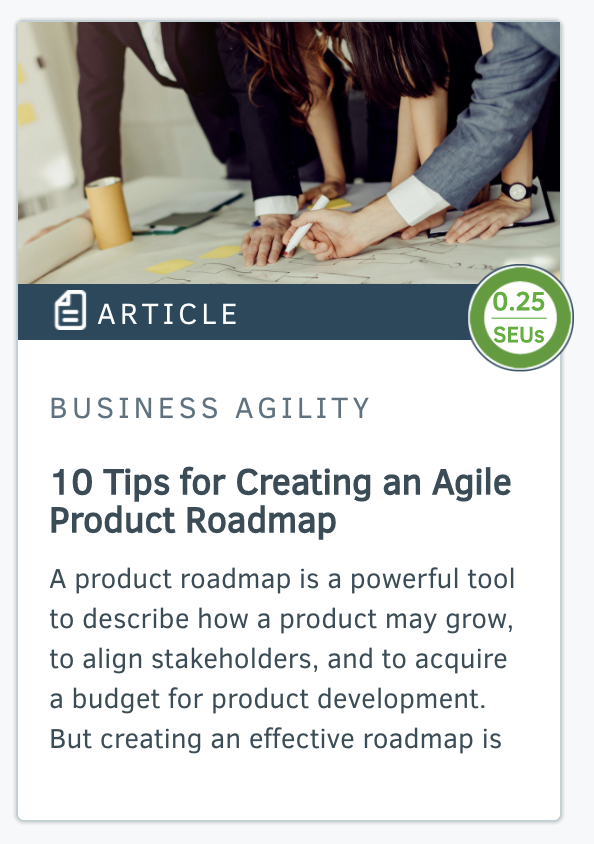Learn about purchasing for teams
How Companies Measure Agile Transformation Success

What parameters should be used to measure whether an agile transformation was implemented successfully in an organization? Scrum Alliance Certified Agile Coach® Chris Waggoner discusses getting the bloody work done.
One of my favorite quotes from Ron Jeffries is, “At the end of the day agile is about getting the bloody work done.”
Many companies do agile. Few companies are agile. Agile is simply a mindset described by the four values of the Manifesto for Agile Software Development and supported by its 12 principles. Agile is not a methodology to be implemented. The difficult work in an agile transformation is changing the mindset of an organization and its people to become a learning organization that is nimble enough to react to any external or internal challenge it may face. Agile coaches help clients learn and experience agile adoption patterns and frameworks like scrum, along with agile methods and techniques. However, at the end of the day, the measure of value received in an agile transformation is not in the number of people trained, how many teams are doing scrum, or how well the company implemented agile scaling. To paraphrase one of the 12 agile principles (while channeling Ron Jeffries) the measure of a successful agile transformation is: Has it helped the organization achieve its desired outcomes?
Related Article: The Differences Between Agile and Scrum, and How They Differ From Waterfall
Before an organization begins an agile transformation, it should first consider what objectives it wants to achieve. Only then should it ask the question how agility can help it achieve its desired outcomes. Desired outcomes can be captured in terms of OKRs (objectives and key results), KPIs (Key Performance Indicators) or SMART goals (specific, measurable, achievable, relevant, and time-based).
What are OKRs (Objectives and Key Results)?
OKRs are big picture goals and targets, tied to strategic initiatives, that push employees in a company to strive to accomplish the nearly impossible. OKRs are usually measurable on a sliding scale of one to 10 or one to 100. An example would be something like speeding up time-to-market from releasing software every three months to releasing software every day. OKR targets are meant to inspire and stretch the organization. They are not meant to be achieved. If they are achieved too readily, then they are too easy. With a time-to-market OKR, apply an agile transformation strategy designed to increase delivery speed. Only after demonstrating a measurable increase in time-to-market could you then claim a successful transformation.
What are KPIs (Key Performance Indicators)?
KPIs are specific. Using the OKR example, a KPI should be achievable and would therefore read differently. The KPI example could read “speed up time-to-market from releasing software every three months” to “releasing software once per month.” In this KPI example, we would need to achieve the performance indicator of delivering software monthly to claim a successful transformation.
What are SMART Goals?
SMART goals are a hybrid lying somewhere between OKRs and KPIs. A SMART goal is specific like a KPI and challenging like an OKR, yet it should be obtainable. Using the same example, a SMART goal may read as follows: “Increase time-to-market of software releases from once every three months” to “once every two weeks within the next year.” Again, you would need to achieve or come close to this goal in order to claim a successful agile transformation.
Related Article: Business Agility Report- Special Edition by Scrum Alliance
The bottom line here is claiming agile transformational success should be measurable and tied to business outcomes and objectives. Implementing agile methods is a foundation to a successful agile transformation. However, training and methods alone don’t generate results without a focus on what a company is trying to achieve and an understanding of why you are trying to achieve it. At the end of the day, agile is about getting the bloody work done so a company and its employees can thrive in an ever-changing environment. An agile transformation should always be about becoming and being agile and thriving in the agile mindset to accomplish a measurable, business-driven result.
Related Article
Article: 10 Tips for Creating an Agile Product Road Map
======
About the Author

Chris Waggoner is a Certified Enterprise Coach and Certified Team Coach located in the Pacific Northwest region of the United States. He has been an agile change agent for more than a decade for multiple clients within multiple industries. Waggoner blends more than 35 years of experience in information technology and consulting with his more recent agile experience to guide organizations through the minefields of organizational change and impediment removal. He is pragmatic in his approach to agile adoption, understanding that each individual, development team, organization, and executive team adopt agile and change at different paces and rhythms.











